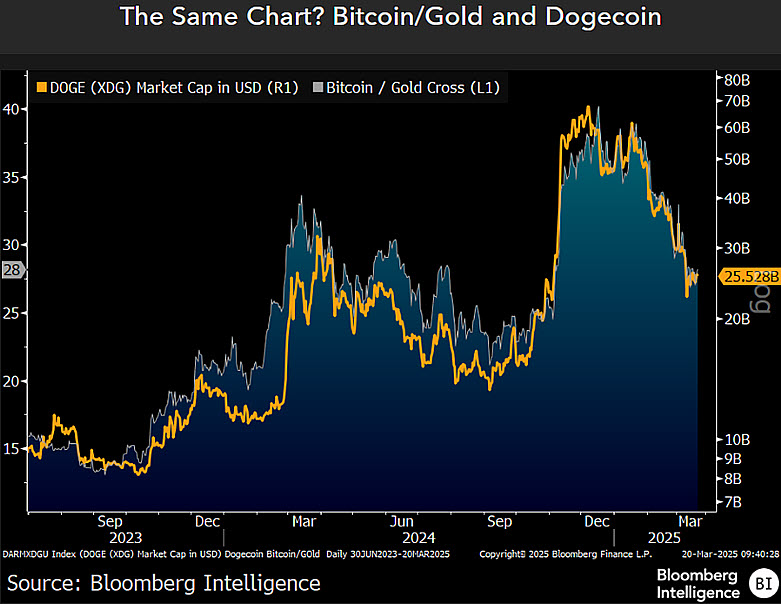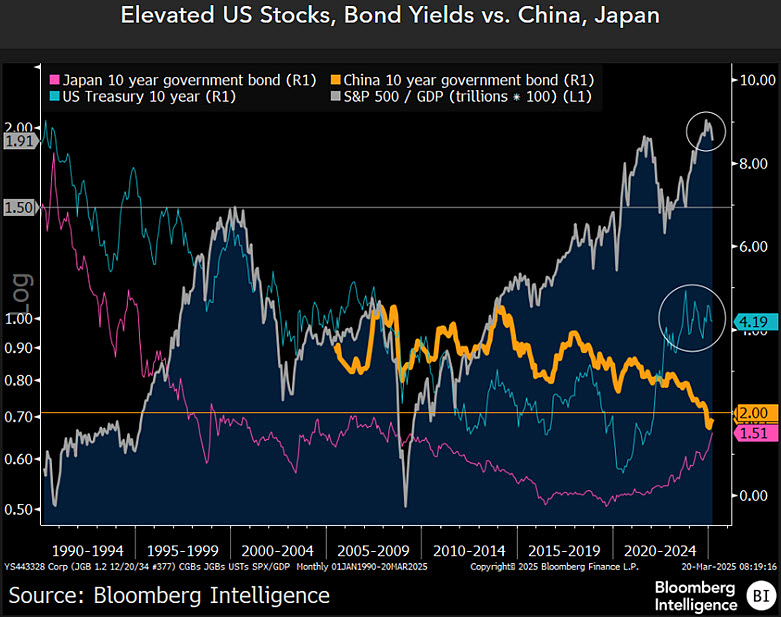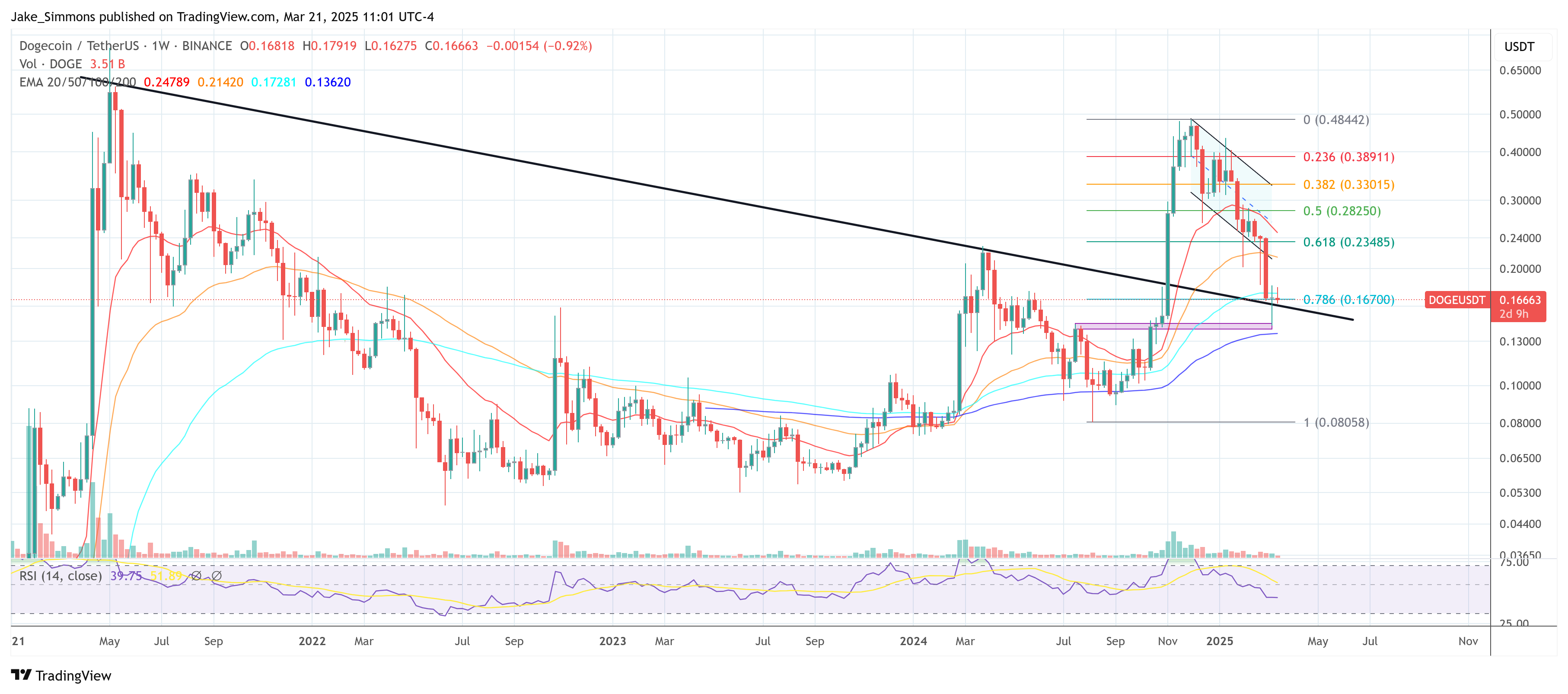Purpose to belief
Strict editorial coverage that focuses on accuracy, relevance, and impartiality
Created by business consultants and meticulously reviewed
The best requirements in reporting and publishing
Strict editorial coverage that focuses on accuracy, relevance, and impartiality
Morbi pretium leo et nisl aliquam mollis. Quisque arcu lorem, ultricies quis pellentesque nec, ullamcorper eu odio.
Este artículo también está disponible en español.
Bloomberg Intelligence’s chief commodity strategist, Mike McGlone, has issued a stark warning to Dogecoin holders and the broader crypto group by drawing comparisons to historic situations of market extra. In a collection of latest posts revealed on X , McGlone invoked the years 1929 and 1999—the infamous eras of the inventory market crash and the dot-com bubble—to underscore the dangers of speculative “silliness” in digital belongings.
Dogecoin Mirrors 1929-Style Danger
He singled out Dogecoin particularly, emphasizing its vulnerability to a possible market reversion, whereas additionally pointing to gold as a beneficiary if danger urge for food continues to deteriorate. “Dogecoin, 1929, 1999 Risk-Asset Silliness and Gold – The ratio of gold ounces equal to Bitcoin trading almost tick-for-tick with Dogecoin may show the risks of reversion in highly speculative digital assets, with deflationary implications underpinning the metal,” he wrote.
Associated Studying
The chart under reveals how intently the meme-inspired cryptocurrency’s market cap has mirrored the Bitcoin-to-gold ratio. The monitoring of those two metrics means that at any time when the relative worth of Bitcoin to gold experiences a shift, Dogecoin’s trajectory pivoted sharply, exposing it to the identical market forces which have traditionally challenged extremely speculative belongings.

McGlone’s broader thesis doesn’t finish with Dogecoin. In one other submit, he turned consideration to the notion of gold reaching $4,000 per ounce, linking such a risk to dynamics within the bond market and to potential declines throughout risk-on sectors, together with cryptocurrencies.
“What Gets Gold to $4,000? 2% T-Bonds? Melting Cryptos May Guide – A path toward $4,000 an ounce for #gold could require something that’s typically a matter of time: reversion in silly-expensive risk assets, notably cryptocurrencies,” he said.
He underscored that if the US inventory market have been to stay beneath stress, bond yields would possibly ultimately be pulled decrease by the comparatively meager 2% or decrease yields seen in China and Japan. Such a state of affairs, in McGlone’s view, provides tailwinds for gold as a result of a shift from comparatively high-yielding Treasuries to lower-yielding authorities bonds overseas may drive buyers towards different havens.
Associated Studying
The chart shared by McGlone reinforces his evaluation of decelerating demand for danger belongings. One visible, titled “Elevated US Stocks, Bond Yields vs. China, Japan,” shows the persistent divergence between US Treasury yields, which hover across the 4.19% mark, and the comparatively subdued charges of Chinese language and Japanese authorities bonds, located nearer to 2% and 1.51% respectively.

The graphic additionally portrays the S&P 500’s market cap-to-GDP ratio, which stays traditionally excessive regardless of latest volatility. McGlone’s conclusion is that continued stress on fairness markets, mixed with international bond charges that sit effectively under US yields, may speed up a rotation into gold if buyers understand a downturn in “expensive” asset lessons, together with danger belongings like Dogecoin.
A 3rd submit addressed the broader altcoin market, with McGlone pointing to Ethereum as a number one indicator of whether or not the general pattern has turned bearish for digital belongings. “Has the Trend Turned Down? Ethereum May Guide – Ether, the No. 2 cryptocurrency, is breaking down, with deflationary implications and gold underpinnings,” he famous.
At press time, DOGE traded at $0.16663.

Featured picture created with DALL.E, chart from TradingView.com


